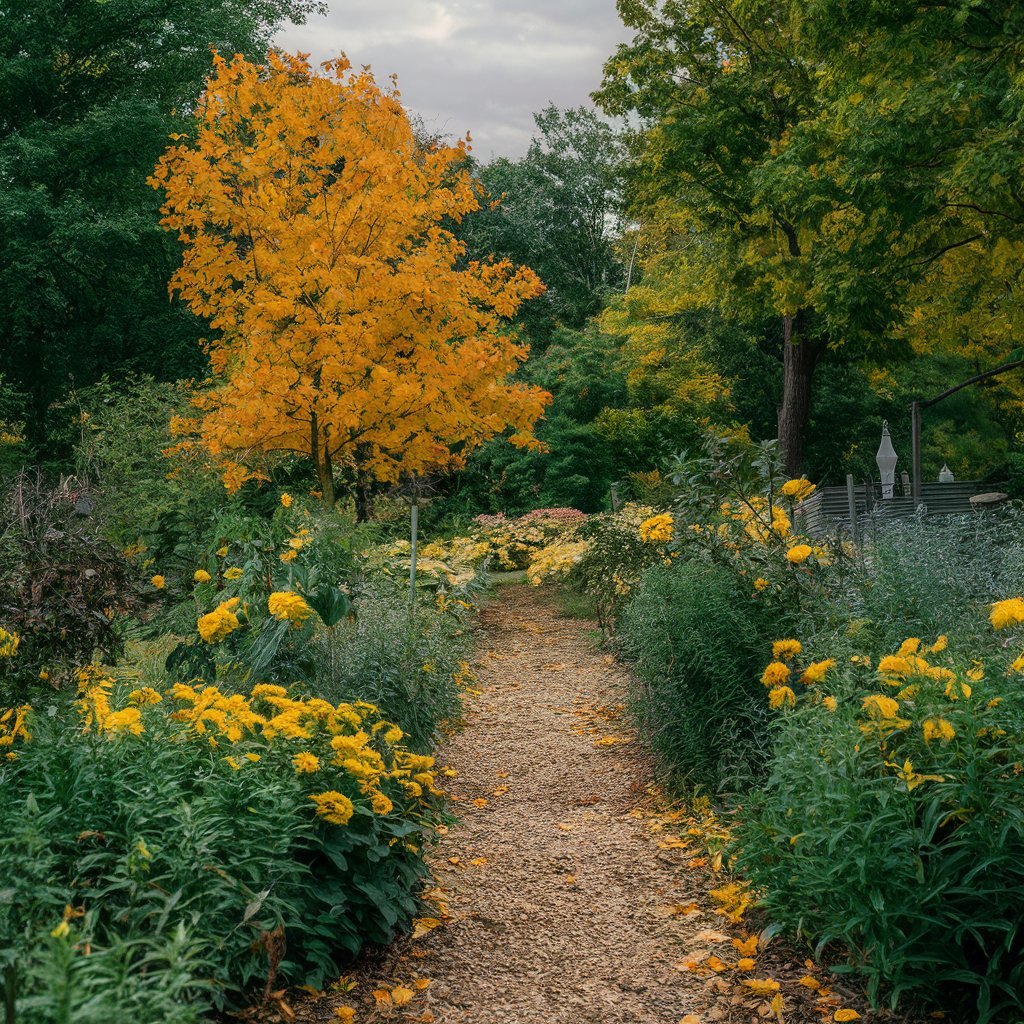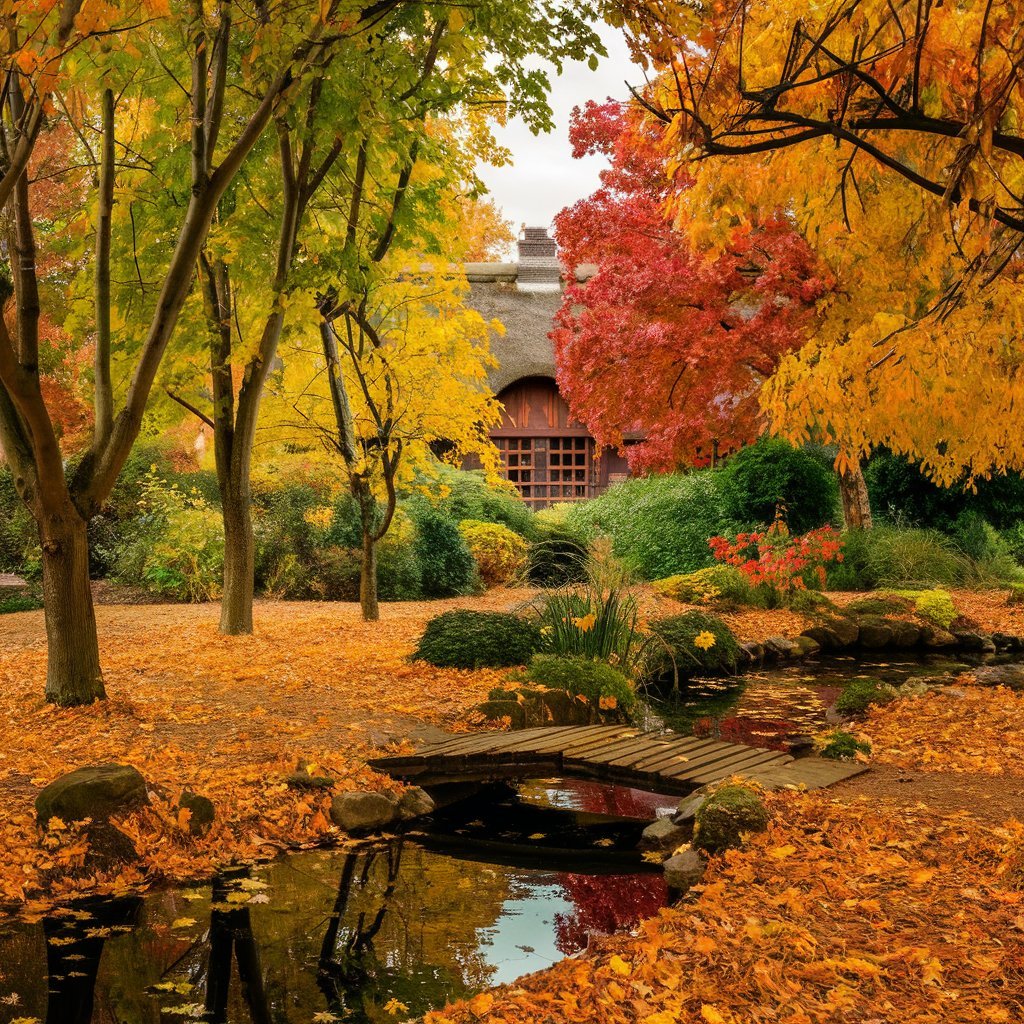Keeping Your Plants Safe from Frost
Winter’s coming, and it’s time to think about keeping your plants safe from frost. Here’s my go-to guide, starting with how frost forms and which plants need extra care.
How Frost Forms
Frost is like the villain in a gardener’s story. It shows up in two main ways: ground frost and air frost. Ground frost happens when the ground gets colder than freezing. Air frost is when the air itself dips below freezing. Both can mess up plant cells, especially with repeated freezing and thawing or sudden thaws.
| Frost Type | What It Means |
|---|---|
| Ground Frost | Ground gets colder than freezing |
| Air Frost | Air gets colder than freezing |
Knowing which type of frost hits your garden helps you pick the right way to protect your plants.
Which Plants Are at Risk?
Not all plants freak out when frost hits. Tender plants are the most vulnerable because they can’t handle the cold. Some plants have tricks up their sleeves, like insulating their water-conductive tissues with bark or building up anti-freeze materials.
Plants are especially at risk in frost pockets—spots where cold air settles because there’s poor drainage and no air movement. Tender plants do better in a sunny, sheltered spot. The new wood ripened by the sun stores more carbs during the growing season, making it tougher against frost.
| Plant Type | Frost Risk |
|---|---|
| Hardy Plants | Low |
| Tender Plants | High |
To keep your plants safe, pick hardy ones that fit your local climate and avoid frost pockets. Cover your plants with breathable stuff like blankets, towels, or sheets to keep them warm. Make sure the cover goes all the way to the ground.
Understanding these basics helps me keep my garden alive and kicking through the winter.

Keeping Your Plants Safe from Frost
Frost can be a real menace for your garden, but don’t worry—there are plenty of ways to keep your plants cozy and safe when the temperature drops. Here’s how you can give your green friends a fighting chance against the cold.
Pick the Right Plants
First off, choose plants that laugh in the face of frost. Hardy plants are your best bet because they’ve got built-in defenses against the cold. Think of them as the superheroes of the plant world. They can insulate their water-conducting tissues with bark, stock up on anti-freeze materials, and even let their cell contents ‘superfreeze’ (RHS).
Here are some tough-as-nails plants:
| Plant Type | Example |
|---|---|
| Vegetables | Kale, Brussels Sprouts, Carrots |
| Flowers | Pansies, Violas, Snapdragons |
Find the Right Spot
Location, location, location! Planting in sheltered spots can make a big difference. Avoid those frost pockets where cold air likes to settle. Instead, plant near buildings or fences that can block the wind and keep things a bit warmer.
Here are some prime spots:
- Close to the house or garage
- Along a sturdy fence
- Under the canopy of bigger trees or shrubs
These areas can create a mini climate that’s just a tad warmer, giving your plants a better shot at surviving the cold.
Cover Up!
When frost is in the forecast, it’s time to break out the covers. Using fleece, burlap, or other materials can create a cozy barrier that traps heat and moisture. This is especially handy during those surprise frosts or sudden cold snaps.
Here’s what you can use:
| Covering Type | Uses |
|---|---|
| Fleece | Lightweight, reusable cover for small plants |
| Burlap | Heavy-duty cover for larger plants and shrubs |
| Mulch | Insulates root areas and retains moisture (Young House Love) |
Don’t forget to add a layer of mulch around the base of your plants. Pine straw, straw, or leaves can help trap air and keep the roots warm.
For more tips on getting your garden winter-ready, check out our fall garden cleanup article.
By following these tips, you can keep your garden looking great even when Jack Frost comes to town. Your plants will thank you!

Keep Your Plants Cozy: Frost Protection Tips
Hey there, green thumbs! If you’re new to gardening, the thought of frost nipping at your plants might give you chills. But don’t worry, I’ve got some easy tricks to keep your garden snug and thriving even when the temperature drops. Here’s what worked for me.
Snuggle Up with Mulch
One of the simplest ways to shield your plants from frost is by tucking them in with a cozy layer of mulch. Mulch acts like a blanket, trapping warm air around the plants and keeping Jack Frost at bay. According to Young House Love, pine straw or regular straw does the job nicely.
Mulch also helps the soil hold onto moisture, and damp soil stays warmer than dry soil. So, you get a two-for-one deal: insulation and hydration.
| Material | Insulation | Moisture Retention |
|---|---|---|
| Pine Straw | High | High |
| Straw | Medium | Medium |
| Hay | Low | Low |
Indoor Plant Slumber Party
Got potted plants? The easiest way to protect them from frost is to bring them inside where it’s warm. If you can’t bring them indoors, move them to a sheltered spot like a garage, basement, or attic. This keeps them safe from the cold snap (Young House Love).
For more tips on fall garden cleanup, check out our detailed guides.
Warm Up with Ambient Heat
Sometimes, a little extra heat can make a big difference. Try wrapping your plants or plant beds with incandescent Christmas lights. These old-school lights (like C9 bulbs) give off a bit of warmth, which can be trapped by a blanket covering the plants (Young House Love).
Stick with incandescent lights because they emit more heat than modern LEDs. Just be careful not to overload your electrical circuits.
| Heat Source | Effectiveness | Safety Tips |
|---|---|---|
| Incandescent Christmas Lights (C9) | High | Don’t overload circuits |
| Heat Lamps | Very High | Keep a safe distance from plants |
| Space Heaters | Medium-High | Use only in protected areas |
By using these frost protection tips, you can keep your garden looking great all through fall and winter. Don’t forget to check out our fall planting guide for more gardening advice. Happy gardening!
Frost Damage Recovery
Pruning Frost-Damaged Growth
When frost hits your plants, the first thing to do is prune the damaged parts. I usually wait until the last frost of the season has passed, often around early March. This way, I can clearly see which parts of the plant are dead and which might still have some life left (AZ Plant Lady).
Here’s how I prune frost-damaged growth:
- Look for signs of life in the stems and branches.
- Use clean, sharp pruning shears to cut back to healthy, green tissue.
- Remove all dead and damaged foliage to prevent disease.
Applying General-Purpose Fertilizer
After pruning, it’s time to give your plants a nutrient boost to help them bounce back. I recommend using a general-purpose fertilizer to support new growth. This provides essential nutrients that might have been depleted during the frost.
| Fertilizer Type | N-P-K Ratio | Application Rate |
|---|---|---|
| General-Purpose (10-10-10) | 10-10-10 | 1 lb per 100 sq ft |
Follow the manufacturer’s instructions for the best results. For more tips on garden maintenance, visit our fall garden cleanup guide.
Enhancing Cold Air Drainage
Improving cold air drainage around your plants can prevent future frost damage. Cold air tends to settle in low areas, so creating better airflow can help protect your plants (RHS).
To enhance cold air drainage:
- Create gaps in fences or hedges to let cold air escape.
- Re-firm soil around newly planted shrubs to ensure stability.
- Consider planting a shelterbelt to provide extra protection from cold winds.
For more detailed advice on planting techniques, check out our fall planting guide.
By following these steps, I can help my garden recover from frost damage and get ready for a healthier growing season ahead.

My name is Michelle Warren, and I’m the founder of Peaceful Gardening. As a 10-year breast cancer survivor, I’ve discovered the profound therapeutic power of gardening. This journey has not only helped me recover but has also become my passion and a source of ongoing peace and joy.
Peaceful Gardening was born from my desire to share the healing benefits of gardening with others. Whether you’re facing health challenges, dealing with stress, or simply looking to connect more deeply with nature, this space is for you.
Over the past decade, I’ve cultivated not just plants, but a deep understanding of how gardening can positively impact mental health. I’ve worked with local community gardens, led workshops on mindful gardening practices, and collaborated with mental health professionals to develop gardening-based stress reduction programs.
Peaceful Gardening was born from my desire to share the healing benefits of gardening with others. Whether you’re facing health challenges, dealing with stress, or simply looking to connect more deeply with nature, this space is for you.
Here, you’ll find evidence-based advice on using gardening as a tool for mindfulness, stress relief, and emotional healing. I share personal stories, practical tips, and scientifically-backed information on how to create your own therapeutic garden space, no matter the size of your yard or balcony.
My mission is to help you discover the joy, peace, and healing that comes from nurturing plants and connecting with nature. Join me in exploring how the simple act of tending to a garden can transform your mental and emotional wellbeing.
Welcome to Peaceful Gardening – let’s grow together towards better mental health!”

